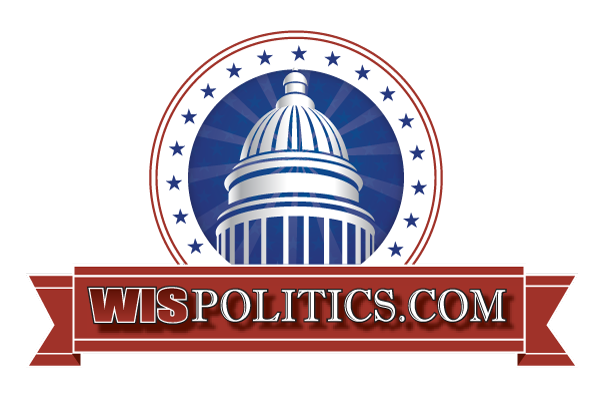From WisPolitics.com/WisBusiness.com …
— Wisconsin insurers are proposing a wide range of rate increases for next year’s ACA marketplace plans, from 6.6% up to 34.5%.
These proposed premium increases were filed with state regulators by health insurers for Affordable Care Act-regulated health plans for 2026, according to a recent report from the Kaiser Family Foundation.
Across all 312 insurers in the ACA marketplaces, the national median proposed premium increase is 18% — about 11 percentage points higher than last year. And the average proposed rate increase for these insurers is about 20%, KFF reports.
In Wisconsin, the median proposed increase is 12.9% and the average is 16.1%.
Report authors note rising health care prices “stood out as a key factor” driving costs in 2026 based on insurer documents. Provider consolidation was also referenced by some insurers as playing a role, as hospital mergers and acquisitions are seen as contributing to higher contracted prices for services and less innovation.
“Insurers cite increasing cost and utilization of high-priced drugs as well as general market factors, such as increasing labor costs and inflation, as contributing to premium increases,” they wrote.
Meanwhile, most insurers are assuming the enhanced premium tax credits will go away after they’re scheduled to sunset at the end of this year, barring action by Congress to extend them. KFF says this assumption is driving proposed rates up by 4% on average.
Adam Vanspankeren is the navigator program manager for Covering Wisconsin, a program of the UW-Madison Divison of Extension that helps state residents get connected with health insurance. In a recent interivew, he said the expected loss of expanded subsidies “is terrible,” but noted standard marketplace subsidies would still be in place.
“We saw it before the expanded subsidies were in place, the prices could be such that the subsidy is still significant, and significant enough to offset a lot of plans on the marketplace,” he said.
Still, he added the loss of expanded subsidies will have the biggest impact on people who are middle-aged and making mid-level income.
“The lowest-income people tend to get the highest tax credits, the highest subsidies … and then people who are at higher incomes can afford their insurance, even maybe without the expanded subsidy,” he said. “People in the middle tend to get squeezed the most.”
Among Wisconsin insurers’ proposed rate increases, the three highest are UnitedHealthcare of Wisconsin Inc. at 34.5%, Compcare Health Services Insurance Corporation at 30.8% and Security Health Plan of Wisconsin, Inc. at 24.3%.
The three lowest are MercyCare HMO, Inc. at 6.6%, Group Health Cooperative of South Central Wisconsin at 6.9% and Network Health at 9.8%.
A spokesperson for the state Office of the Commissioner of Insurance says the agency has received rate filings from marketplace health insurers and is “in communication with them about their proposed rates.” OCI will release final ACA rates for 2026 in the fall.
See the KFF report.
— Gov. Tony Evers announced Eli Lilly and Co. will be eligible for up to $100 million in state tax credits to boost its $4 billion investment in a Wisconsin manufacturing facility.
According to the Wisconsin Economic Development Corp., the $100 million in incentives are contingent upon the company creating at least 700 jobs and making at least $2.2 billion in capital investments.
The incentive package includes benchmarks for each year over the 12-year life of the enterprise zone with a cap on how many credits can be earned.
The Indianapolis-based company announced in December that it planned a $3 billion expansion of the Kenosha County manufacturing facility it had acquired earlier last year. The company expected to add 750 jobs to the more than 100 already working at the facility.
The guv’s office said the company’s acquisition, expansion and additional purchases of property upped the planned investment to $4 billion.
Evers yesterday praised the company’s “historic investment in our communities” as “great news for Wisconsin.”
Meanwhile, Lilly Executive Vice President Edgardo Hernandez said the company appreciates the partnership and leadership from the guv, WEDC, local officials and others.
“We look forward to contributing to the region’s strong legacy of innovation and economic vitality for years to come,” said Hernandez, who’s also president of the company’s manufacturing operations.
See the release below.
Top Stories
– The quest to create gene-edited babies gets a reboot
– Ex-Trump surgeon general: RFK Jr. vaccine move ‘going to cost lives’
– Kennedy Cancels Nearly $500 Million in mRNA Vaccine Contracts
– What to know about Legionnaires’ disease, which has sickened dozens in New York City
– CDC to disburse delayed funds for fighting fentanyl and more, staffers say
– New studies tie unrecognized deaths and health problems to Maui and LA wildfires
Press Releases
– Nordic Consulting: Named a top consulting firm of 2025 by The Consulting Report



